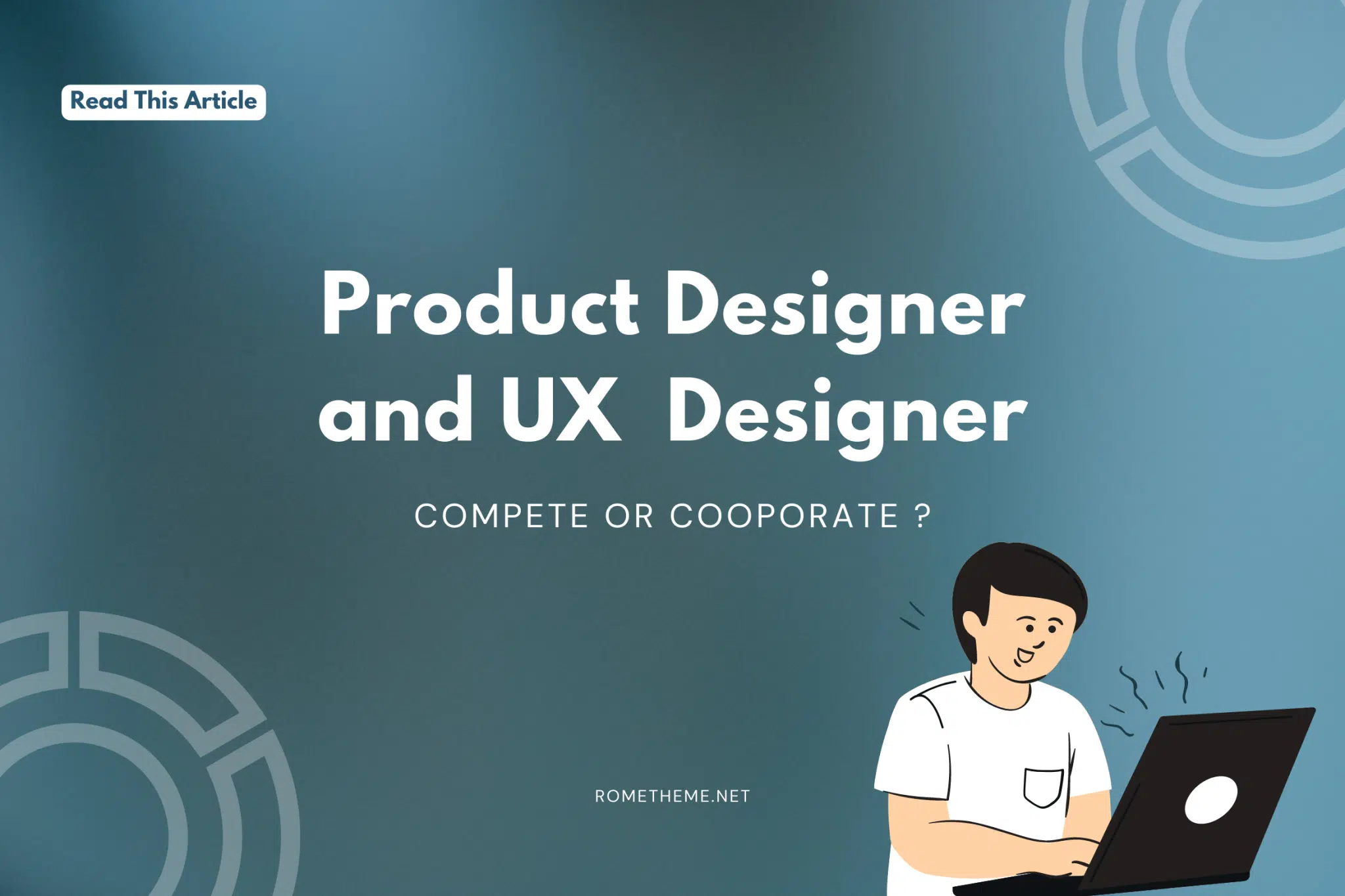Many people think that product designer and UX designer are two competing or different workers. In fact, the difference between product design and UX design is that the latter focuses on ensuring the user experience with the app or website flows smoothly, while the former does more of the physical aspects.
The two roles work together. No product design vs. UX design. The product designer has a significantly more responsibility to see how the different parts of the product interact with each other, while the UX designer is responsible for making sure it looks good, is comfortable to use — whatever makes the interaction fun!
Product designers and UX designers often manage similar responsibilities. However, both are executing their functions with different motivations in mind.
Product designers are thinking about where a product fits in the customer journey. They’re considering details like the economy, your business’s industry, competitor products, and stakeholder needs. It’s their job to make sure the product not only works but is interesting and enticing to its target audience.
On top of that, they need to make sure the product is not only successful upon its release but continues to be relevant over time. Unlike UX designers who typically bounce from project to project, product designers never stop working on a product and will often update it to improve its design. That’s why product designers need to think about the long-term needs of the business, so they can ensure their products will continue to be effective as the business grows and develops.
UX designers are thinking a little differently. Unlike a product designer who is concerned with the business, the design process, and overall costs, the UX designer is focused solely on usability and how people will experience the product. UX designers pay close attention to customer satisfaction as their goal is to build a product that fulfills their users’ needs.
As a result, UX designers typically do more work on a product before its released. After that, they might revisit a product for a potential redesign, but they’re moving on to the next project in their workflow in most cases.
The graphic below outlines the difference between where UX and product designers spend the majority of their time working on a product’s design.
What skills does a UX designer need?
Some of the general requirements to become a UX designer that we meet in several cases are :
- Strong understanding of the UX design process
- Proficiency in industry-standard design and prototyping tools such as Sketch, Adobe XD, or Figma
- Experience in planning and conducting user research and competitor analysis
- The ability to interpret data and qualitative feedback
- Experience in creating user stories, personas, and storyboards
- Determine information architecture and create sitemaps
- Prototyping and wireframing skills
- Understanding of interaction design principles Understanding of business metrics and the ability to translate company goals and objectives into digital experiences
What skills does a product designer need?
And the skills that need to be held as a product designer are :
- Relevant undergraduate degree or formal qualification
- 3+ years of professional experience in UX/UI design
- Proficiency in industry-standard design and prototyping tools such as Sketch, Adobe XD, or Figma
- A strong understanding of how to apply design thinking when planning and scoping project work
- Experience in contributing to a design system
- A portfolio that demonstrates functional designs across desktop and mobile devices
- A user-centric mindset
- Strong wireframing/prototyping skills
- Experience conducting research/partnering with user researchers
- Experience partnering with engineers to release features, products, and/or services
- Experience working on complex applications
- Strong visual and verbal communication skills
- Strong cross-functional collaboration and communication skills
By having the qualifications mentioned above, a UX designer and product designer will also be responsible for carrying out their duties, including the following:
The responsibilities of a Product Designer:
The UX product designer job description can contain many areas of responsibility. we’ve listed some specific a product designer definitions below:
- Product designers are responsible for the look and feel of a product from every angle.
- They might use sketching, wireframing, or other design tools to create ideas that could become actual products.
- Product designers need to be knowledgeable in graphic design, color theory, and typography.
- They need to measure KPIs and make sure the product becomes what it’s supposed to be.
The responsibilities of a UX Designer:
- UX designers are responsible for the ease and enjoyment that users have when using a product.
- They work to ensure that everything is easy, intuitive, and straightforward, so nobody feels lost or confused.
- UX designers need to be knowledgeable in user research methods such as usability testing, interviews, diary studies, field experiments, etc.
- They also need a good understanding of human-computer interaction principles like cognitive load theory to ensure they’re designing products that don’t overwhelm anyone who might use it.
- A UX designer typically works on wireframes during the preliminary stages of project planning before creating any visual assets.
The main takeaway from this comparison is that product designers and UX designers have very similar jobs—but it’s arguable that a product designer has a few more responsibilities in terms of thinking of the process as a whole, including the business, process, and branding.
That’s not to say that a product designer does more work than a UX designer! Depending on the product and company, it’s likely that both roles will involve the same level of hard work and dedication to ensuring the product is the best it can possibly be. In fact, the roles are so similar that they’re easily interchangeable.
Source: radahl.no, careerfoundry.com, coursera.org, blog.hubspot.com










